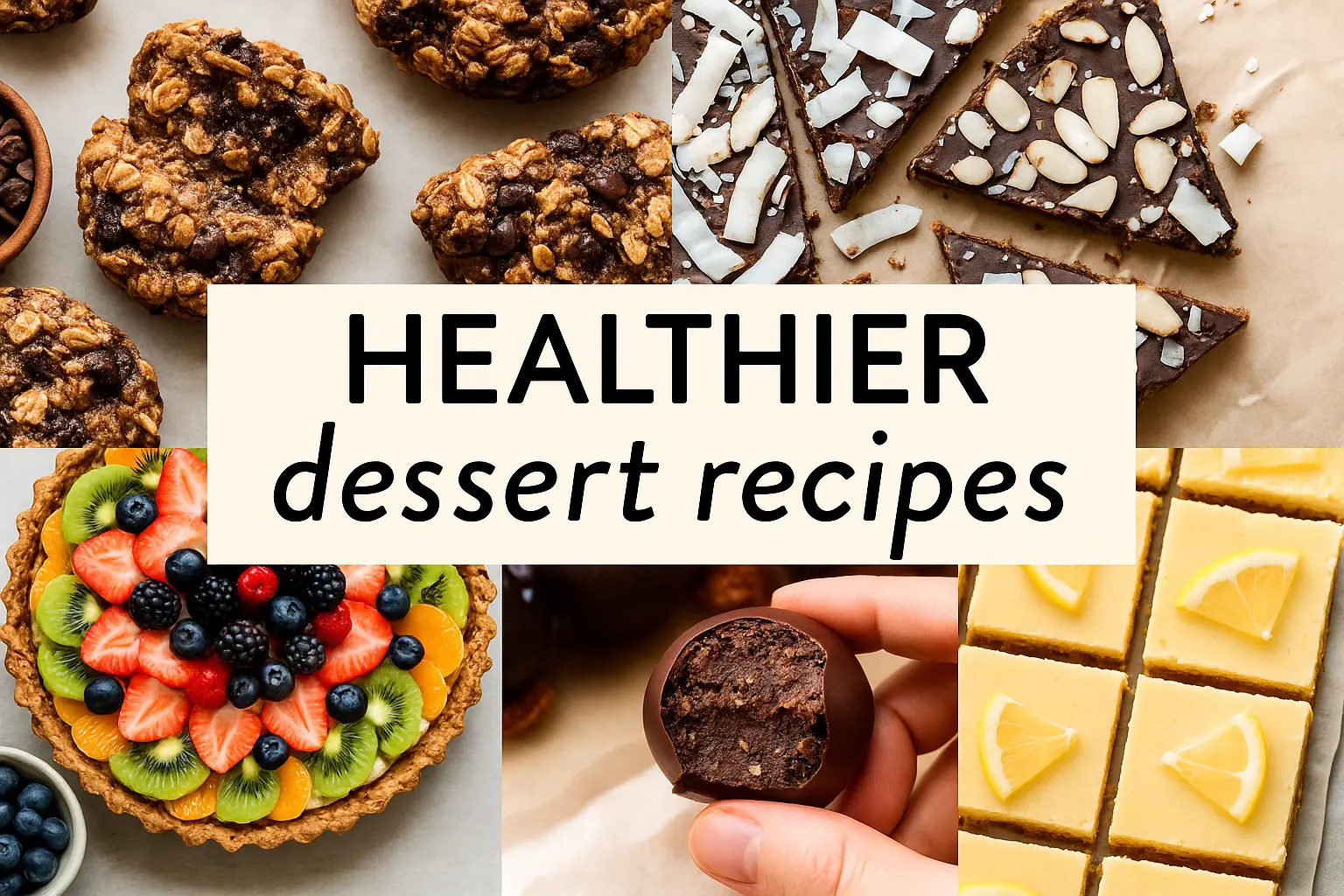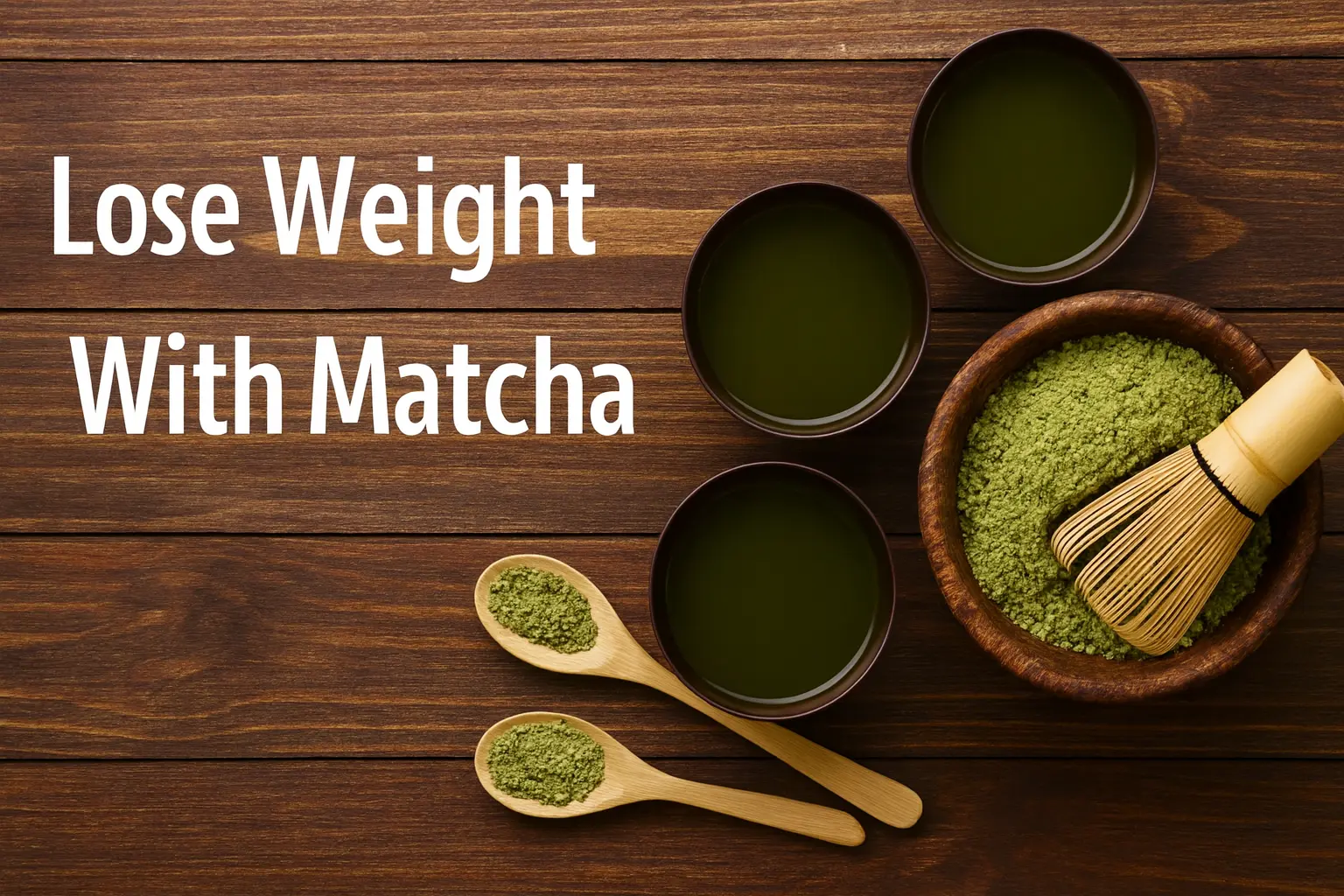Introduction
If you’ve ever felt torn between staying healthy and enjoying desserts, you’re definitely not alone. Most of us have been in that moment where our sweet tooth begs for brownies, cookies, or a slice of warm banana bread, while another part of us worries about refined sugar, extra calories, and unhealthy fats. The best part? You don’t have to give up your favorite treats anymore. Today, Healthy Dessert Recipes are becoming a lifestyle choice rather than just a trend, helping you enjoy sweetness without guilt. With just a few smart swaps, like using natural sweeteners, nutrient-rich ingredients, and lighter alternatives, you can create desserts that support your health goals instead of working against them.
From my own experience, I used to believe desserts were only allowed on cheat days, but everything changed once I started experimenting with Healthy Dessert Recipes. Replacing refined sugar with dates or honey, using Greek yogurt instead of butter, and switching from white flour to oat or almond flour not only made my desserts healthier but also surprisingly richer in flavor.
Whether it’s family gatherings, festivals, or weekend treats, these healthier versions quickly became crowd favorites. Now, I often enjoy them guilt-free, sometimes even as a post-workout snack or as a light workout meal, because these Healthy Dessert Recipes offer both nourishment and taste. As you explore the different categories of Healthy Dessert Recipes, you’ll realize that eating clean doesn’t mean giving up dessert, it simply means choosing better ingredients.
Table of Contents
What Makes a Dessert “Healthy”?
The term “healthy dessert” can mean different things to different people. For some, it’s about cutting down on refined sugar. For others, it’s about using whole, nutrient-dense ingredients that provide more than just empty calories. The truth is, a dessert doesn’t have to be sugar-free or fat-free to be considered healthy—it simply needs to strike the right balance of flavor, nutrition, and portion size.
One of the biggest ways to make desserts healthier is by swapping out processed ingredients for natural alternatives. Instead of refined sugar, you can use honey, maple syrup, dates, or coconut sugar. These options not only sweeten your dessert but also provide extra minerals and antioxidants. Similarly, replacing butter or heavy cream with Greek yogurt, nut butters, avocado, or coconut oil adds creaminess while delivering protein and healthy fats. And instead of refined white flour, options like oat flour, almond flour, or whole wheat flour make your desserts higher in fiber and easier to digest.
Here’s a quick checklist of what makes a dessert truly “healthy”:
- High fiber from oats, chia seeds, flax, or whole grains.
- Protein boost from nuts, seeds, yogurt, or plant-based powders.
- Healthy fats from avocado, almonds, walnuts, or olive oil.
- Low refined sugar by using natural sweeteners.
- Balance & moderation, because even the healthiest dessert should be enjoyed in reasonable portions.
When you start looking at desserts this way, it becomes clear that “healthy” doesn’t mean compromising on taste. Instead, it’s about making smarter choices that let you indulge without the guilt.
Recipe Categories / Clusters
To make it easier for you to explore, we’ll break down healthy dessert recipes into different categories. Each cluster includes recipes that are simple, versatile, and designed to fit into your lifestyle, whether you want something quick, indulgent, or family-friendly.
A. No-Bake & Frozen Healthy Desserts
When you don’t want to turn on the oven, no-bake and frozen desserts are the perfect choice. They’re quick, refreshing, and often packed with nutrient-rich ingredients.
- Yogurt Popsicles: Frozen strawberry yogurt ice pops are a fun, fruity treat for kids and adults alike.
- Energy Bites / Bliss Balls: Made with oats, nut butter, dates, and chocolate chips, these bite-sized snacks are full of fiber and healthy fats.
- “Nice Creams”: Banana-based ice creams flavored with cocoa, peanut butter, or berries are creamy, dairy-free alternatives to traditional ice cream.
- No-Bake Tarts & Fudge Bars: With bases made from nuts, dates, and oats, these desserts feel indulgent but are loaded with nutrients, making them one of the simplest nutrition tips for guilt-free eating.
B. Healthy Cakes & Breads
For those who love baked goods, healthy versions of cakes and breads are just as satisfying but far more nourishing.
- Oat Flour Banana Bread: A classic made healthier with oats, Greek yogurt, and dark chocolate chips.
- Zucchini Cakes & Breads: Moist and light options like pineapple zucchini cake or flourless zucchini brownies sneak in vegetables without compromising taste.
- Almond Flour Cookies & Brownies: Gluten-free, nutty, and rich in flavor, these are perfect for anyone avoiding refined flour.
- Seasonal Breads: Pumpkin banana bread or carrot cake bring warmth and spice, making them festive and nutritious.
C. Cookies & Bars
Cookies and bars are classic desserts, and with the right ingredients, they can be both delicious and nourishing.
- Almond Flour Chocolate Chip Cookies: Crisp on the edges, chewy in the middle, and naturally gluten-free.
- Oatmeal Bars: Options like peanut butter banana bars or chocolate chunk tahini bars are great for on-the-go snacking.
- Holiday Cookies: Snickerdoodles, peppermint cookies, or “monster” cookies can all be made with whole ingredients.
- Protein Cookies: Boosted with chia, oats, or peanut butter, they’re a great post-workout treat.
D. Chocolate Lover’s Healthy Recipes
Chocolate doesn’t need to be off-limits when you’re eating healthy. In fact, dark chocolate paired with nutrient-rich ingredients can be incredibly good for you.
- Black Bean Brownies: Surprisingly fudgy and rich, while packing in fiber and protein.
- Flourless Chocolate Cakes: Naturally gluten-free and deeply satisfying.
- Dark Chocolate Almond Truffles: A mix of nuts, cocoa, and a hint of honey for indulgence without excess sugar.
- Chocolate Puddings & Mousse: Made with avocado, silken tofu, or walnuts for creaminess and nutrition.
E. Fruit-Based Healthy Desserts
Fruit is naturally sweet and makes a perfect foundation for guilt-free desserts.
- Baked Apples & Pears with Granola: Warm, spiced, and comforting.
- Berry Crisps & Cobblers: Made with oats and chia seeds for fiber-rich sweetness.
- Strawberry Oatmeal Bars: A simple, crowd-pleasing option that’s easy to meal-prep.
- Chocolate-Dipped Oranges or Fruit Tarts: Bright, fresh, and lightly indulgent.
These categories show that there’s a healthy dessert recipe for every mood, whether you’re craving something cold and refreshing, warm and cozy, or rich and chocolatey.
Nutritional Benefits / Why They’re Better
Healthy Dessert Recipes aren’t just about cutting calories, they’re about adding real nutritional value to what you eat. Instead of relying on empty sugars and heavily processed fats, these recipes focus on ingredients your body can actually benefit from. By making intentional swaps, you turn ordinary desserts into foods that fuel your energy, support digestion, and contribute positively to your overall health. This makes Healthy Dessert Recipes a smart choice for anyone who wants flavor and nourishment in the same bite.
One of the biggest advantages of Healthy Dessert Recipes is the significantly higher fiber content. Ingredients like oats, flaxseeds, chia seeds, and whole grains provide the kind of fiber that helps regulate blood sugar, keeps you fuller for longer, and supports a healthy gut. This added fiber makes your dessert not only more satisfying but also far more balanced than traditional sugary treats that lead to quick spikes and crashes in energy.
Another major benefit is the boost of plant-based proteins. Nuts, seeds, Greek yogurt, and even legumes, like black beans blended into brownies, add protein that supports muscle repair, improves satiety, and helps control cravings throughout the day. For people who exercise frequently or simply want more balanced snacks, Healthy Dessert Recipes offer a flavorful way to integrate more protein into your routine.
These desserts also contain heart-healthy fats from sources like avocado, walnuts, almonds, and olive oil. These natural fats help support brain function, improve satiety, and promote cardiovascular health without the heaviness or inflammation caused by processed oils and butter. This makes Healthy Dessert Recipes a better long-term choice for both taste and well-being.
Perhaps the most valuable benefit is the lower sugar content. By using natural sweeteners such as dates, honey, maple syrup, or monk fruit, you can enjoy sweetness without the rapid blood sugar spikes that come from refined sugar. This leads to steadier energy levels, fewer cravings, and a dessert that works with your health, not against it.
On top of all this, many Healthy Dessert Recipes are gluten-free, dairy-free, and vegan-friendly, making them accessible to a wide range of dietary needs. Most options fall between 100–200 calories per serving, which makes portion control and daily enjoyment much easier compared to traditional cakes and pastries.
Tips for Making Healthy Desserts at Home
Making desserts healthier doesn’t have to be complicated, it simply comes down to smart choices, a little creativity, and some basic preparation. With the right approach, almost any dessert can be transformed into a more nutritious version without sacrificing flavor. In fact, many people discover that healthier desserts taste even richer and more satisfying once they start exploring Healthy Dessert Recipes.
Watch your portion size
Even when you’re enjoying Healthy Dessert Recipes, portion control still matters. A giant slice of banana bread or a huge serving of cookies can add up quickly. Choosing smaller portions allows you to enjoy every bite without going overboard, helping you stay balanced.
Use ripe fruit for natural sweetness
Nature offers plenty of sweetness, and ripe bananas, dates, or applesauce can reduce the need for added sugar. These ingredients not only enhance the flavor of your desserts but also add fiber, minerals, and antioxidants. This is a core trick behind many Healthy Dessert Recipes, making them both tasty and nutritious.
Balance flavors wisely
Sometimes all you need is a pinch of salt, a dash of cinnamon, or a splash of vanilla to bring out natural sweetness. These simple flavor boosters help you rely less on sugar while still creating desserts that taste amazing, another secret you’ll find in most Healthy Dessert Recipes.
Keep healthy staples stocked
If your pantry is ready, making healthier treats becomes effortless. Ingredients like oats, nut butters, cocoa powder, seeds, honey, and frozen bananas make it incredibly easy to prepare Healthy Dessert Recipes whenever cravings strike.
Prep ahead and store smartly
One of the biggest advantages of Healthy Dessert Recipes is that many can be made in advance. Energy bites, oatmeal bars, muffins, and cookies freeze well, while banana breads and brownies stay fresh in airtight containers. This means you always have something wholesome on hand when your sweet tooth calls.
By following these simple tips, you’ll find it easier to bake smarter, eat better, and enjoy Healthy Dessert Recipes without hesitation or guilt.
FAQs (Frequently Asked Questions)
Q1. Are these healthy dessert recipes really sugar-free?
Not always. Many replace refined sugar with natural sweeteners like honey, dates, or monk fruit.
Q2. Can I make them dairy-free or vegan?
Yes, most of these recipes can easily be adapted. Greek yogurt can be swapped for coconut yogurt, butter can be replaced with nut butters or coconut oil, and eggs can often be substituted with flax eggs or chia eggs.
Q3. What’s the best flour substitute, oat, almond, or whole wheat?
It depends on your preference. Oat flour is great for light, fiber-rich desserts, almond flour is perfect for gluten-free and nutty flavors, and whole wheat flour works when you want a heartier, more traditional texture. Sometimes a mix of these flours gives the best results.
Q4. Do these recipes work for kids or picky eaters?
Absolutely. In fact, desserts like energy bites, banana bread, and chocolate avocado mousse are kid-approved. Many children won’t even notice the healthier swaps once the dessert is sweet, soft, and tasty.
Q5. How long can I store no-bake desserts?
Most no-bake desserts like bliss balls, bars, or nice creams can last up to a week in the fridge. If you want to keep them longer, freeze them in airtight containers and thaw before serving.
Call-to-Action / Conclusion
Healthy Dessert Recipes prove that you don’t need to give up sweetness to stay on track with your health goals. By making simple yet impactful swaps, such as choosing oat flour over refined flour, replacing white sugar with honey or dates, or using Greek yogurt in place of butter, you can transform your favorite desserts into something nourishing, satisfying, and far better for your body. These small changes add up, and before you realize it, you’ll be enjoying treats that feel indulgent but still align with your wellness routine.
What makes Healthy Dessert Recipes even more exciting is the incredible variety they offer. Whether you’re looking for quick no-bake bites, warm banana breads, rich chocolate treats, or refreshing fruity options, there’s truly something for every craving and every season. Many of these desserts are easy to prepare, store, and enjoy throughout the week, turning them into convenient little daily rituals that help you avoid unhealthy snacking. In a way, Healthy Dessert Recipes act like tiny habits that support long-term balance and healthier eating patterns.
Now it’s your turn to dive in,pick one idea from the categories above, and try it out this week. Share how it turns out, let us know which swap you loved most, and pass this guide along to friends or family who also want to enjoy guilt-free desserts. The more you explore Healthy Dessert Recipes, the more confident you’ll feel making smart choices that are both delicious and nourishing.
And if you want inspiration delivered straight to your inbox, join our mailing list for weekly Healthy Dessert Recipes and follow us on Pinterest or Instagram for fresh ideas you can save and share.






One Response
hello there and thank you on your info – I have definitely picked up anything new from proper here. I did alternatively expertise some technical points the use of this website, since I skilled to reload the site lots of instances prior to I may just get it to load correctly. I were thinking about if your hosting is OK? Now not that I’m complaining, however slow loading cases occasions will sometimes affect your placement in google and could damage your high-quality score if advertising and ***********|advertising|advertising|advertising and *********** with Adwords. Well I’m including this RSS to my email and could glance out for much extra of your respective interesting content. Make sure you replace this once more very soon..